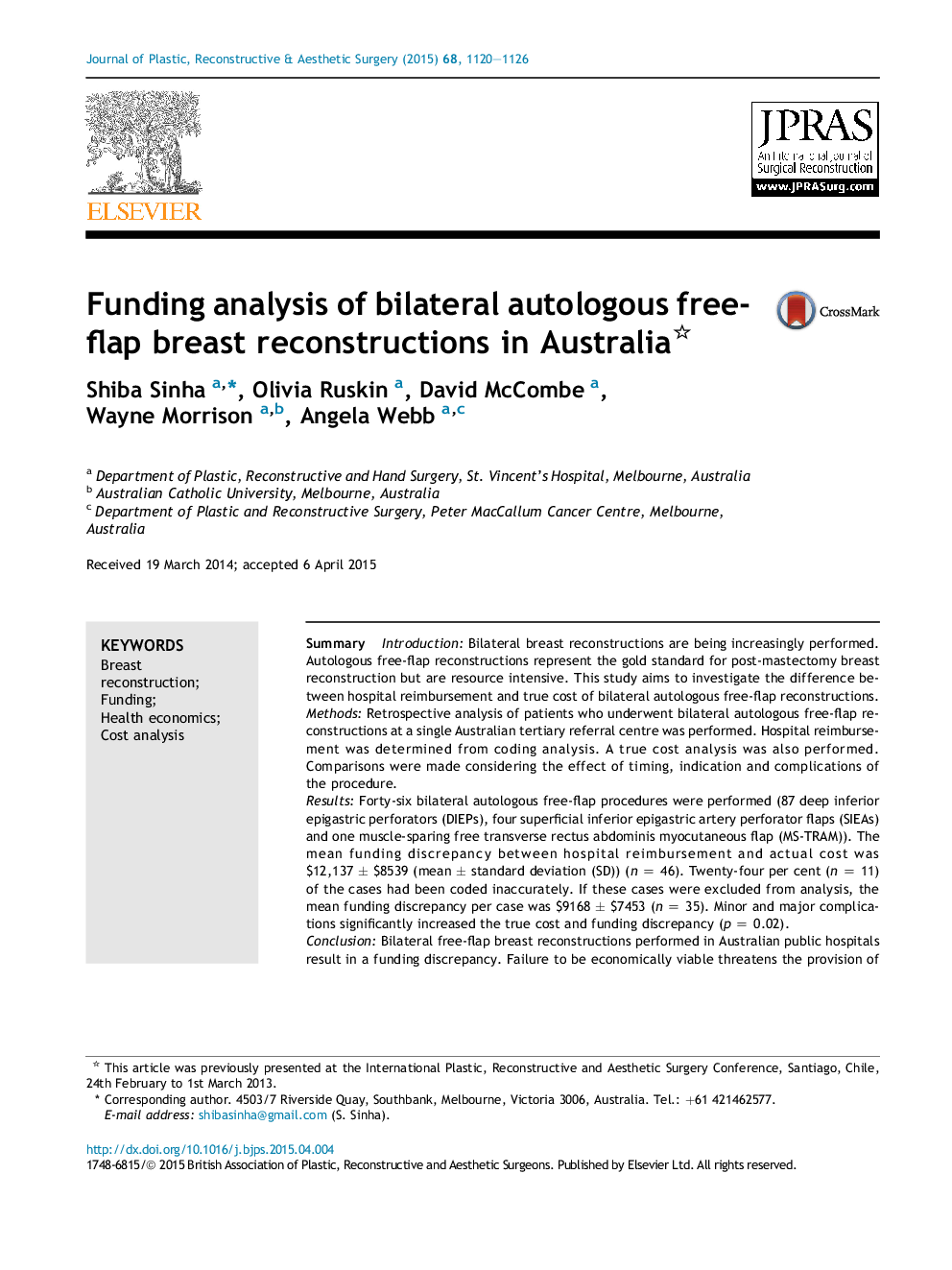| Article ID | Journal | Published Year | Pages | File Type |
|---|---|---|---|---|
| 6214291 | Journal of Plastic, Reconstructive & Aesthetic Surgery | 2015 | 7 Pages |
SummaryIntroductionBilateral breast reconstructions are being increasingly performed. Autologous free-flap reconstructions represent the gold standard for post-mastectomy breast reconstruction but are resource intensive. This study aims to investigate the difference between hospital reimbursement and true cost of bilateral autologous free-flap reconstructions.MethodsRetrospective analysis of patients who underwent bilateral autologous free-flap reconstructions at a single Australian tertiary referral centre was performed. Hospital reimbursement was determined from coding analysis. A true cost analysis was also performed. Comparisons were made considering the effect of timing, indication and complications of the procedure.ResultsForty-six bilateral autologous free-flap procedures were performed (87 deep inferior epigastric perforators (DIEPs), four superficial inferior epigastric artery perforator flaps (SIEAs) and one muscle-sparing free transverse rectus abdominis myocutaneous flap (MS-TRAM)). The mean funding discrepancy between hospital reimbursement and actual cost was $12,137 ± $8539 (mean ± standard deviation (SD)) (n = 46). Twenty-four per cent (n = 11) of the cases had been coded inaccurately. If these cases were excluded from analysis, the mean funding discrepancy per case was $9168 ± $7453 (n = 35). Minor and major complications significantly increased the true cost and funding discrepancy (p = 0.02).ConclusionBilateral free-flap breast reconstructions performed in Australian public hospitals result in a funding discrepancy. Failure to be economically viable threatens the provision of this procedure in the public system. Plastic surgeons and hospital managers need to adopt measures in order to make these gold-standard procedures cost neutral.
